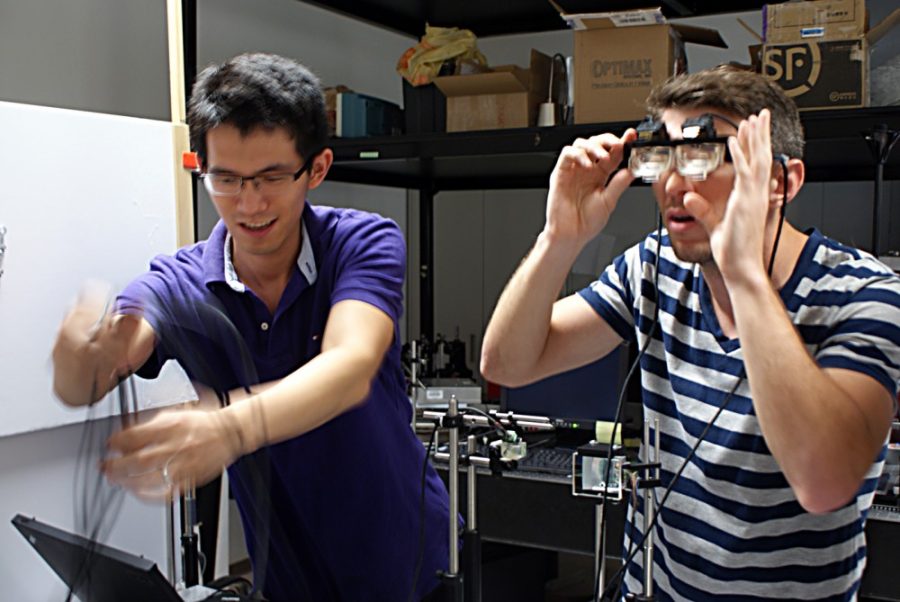Optical science graduate students are working with a UA professor on a project that has the potential to outshine Google Glass.
Four graduate students in the optical sciences program, Xinda Hu, Sheng-Huei Lu, Jason Kuhn and Yi Qin, are working together with Hong Hua to create a product named Heads Up Display. The eyeglasses contain two thick lenses attached to an LCD screen that is reflected and magnetized onto the lenses. Once connected to a computer, the eyeglasses can display almost anything.
The manufacturing process has become a lot better, cheaper and more precise, making this project possible for the optical sciences program at the UA and other organizations working toward a similar goal: hands-free technology.
“We’re trying to produce a realistic virtual scene and an augmented reality,” Qin said. “Our main focus is on an imaging system. Optical sciences is very large, and we are only working on a fraction of it known as a freeform optics design.”
Within the past 10 years, optical sciences began focusing its research and design around eyeglasses. Google Glass is one of the few marketed technologies to rely on optical engineering and design. The eyeglasses are geared toward a hands-free population.
The slim design isn’t available on store shelves — only by application on their website if one provides a reason for wanting the product.
The main differences between Heads Up Display and Google Glass are size and quality, according to Kuhn. Google makes a wearable design — the glasses weigh 36 grams — but at the cost of quality and reduced potential due to the size limit.
UA’s eyeglasses weigh about half a pound but have a larger field of view and higher quality resolution than Google Glass, Kuhn said. The eyeglasses are not limited by size and, therefore, have an abundance of possibilities, he added.
“Their technology is very similar to ours. The biggest difference is that they are limited to what people want to wear on a day-to-day basis, and, therefore, they have a smaller and more fashionable design,” Kuhn said. “Our design is not something you would wear to a grocery store. Our prototype is a virtual reality proof-of-concept.”
The technology used for Heads Up Display is focused more on individuals who need a realistic display, such as doing virtual reality training or a surgical procedure.
Although Google Glass is the most commonly recognized product for this new technology, other organizations have been working on similar products.
“The big thing about Google Glass is the marketing and software implementation,” Kuhn said. “They have patents on everything from embedding the camera to voice activation, which only Google or Apple could maybe pull off.”
Hua is considered a “master” at the UA by her graduate students for her work in optical engineering, according to Qin.
“She’s one of the nicest professors here,” Qin said. “She has a lot of experience with optical design, and she taught us how to do everything.”
-follow Emily @ebregger_news









